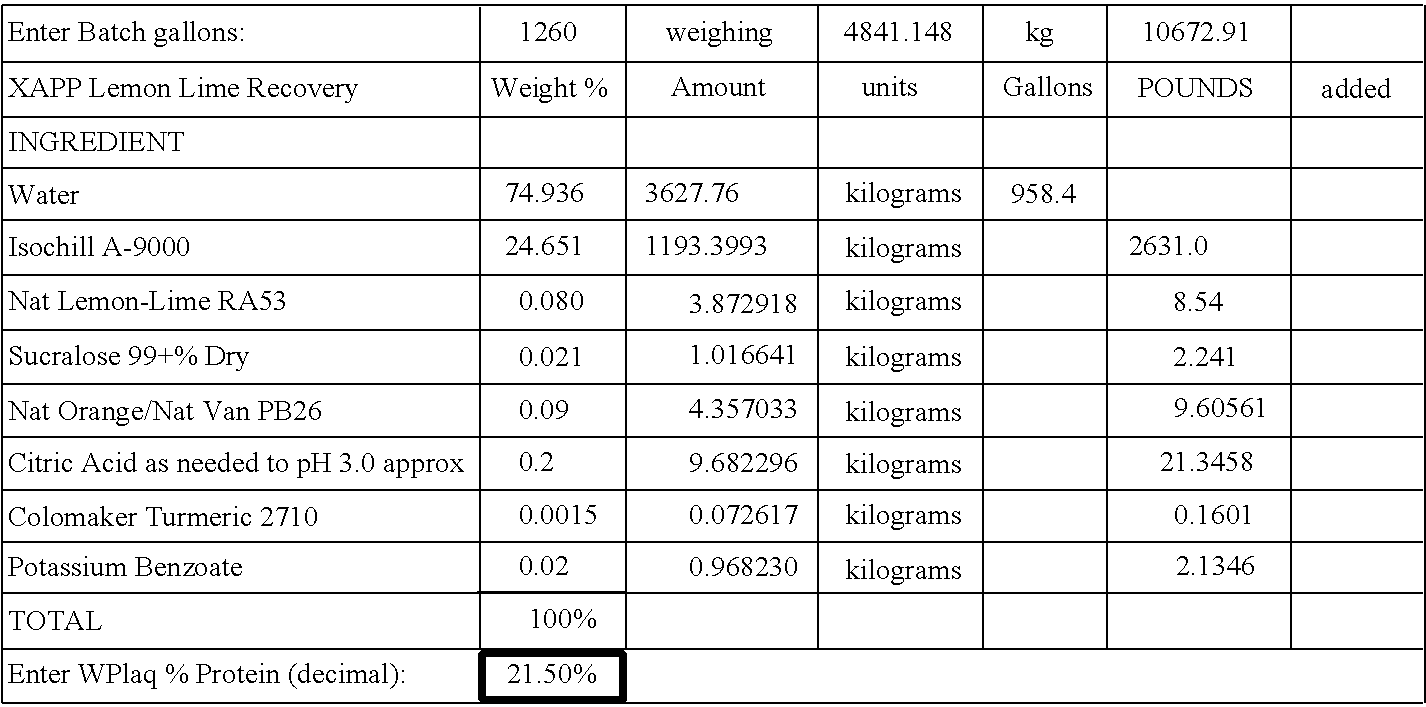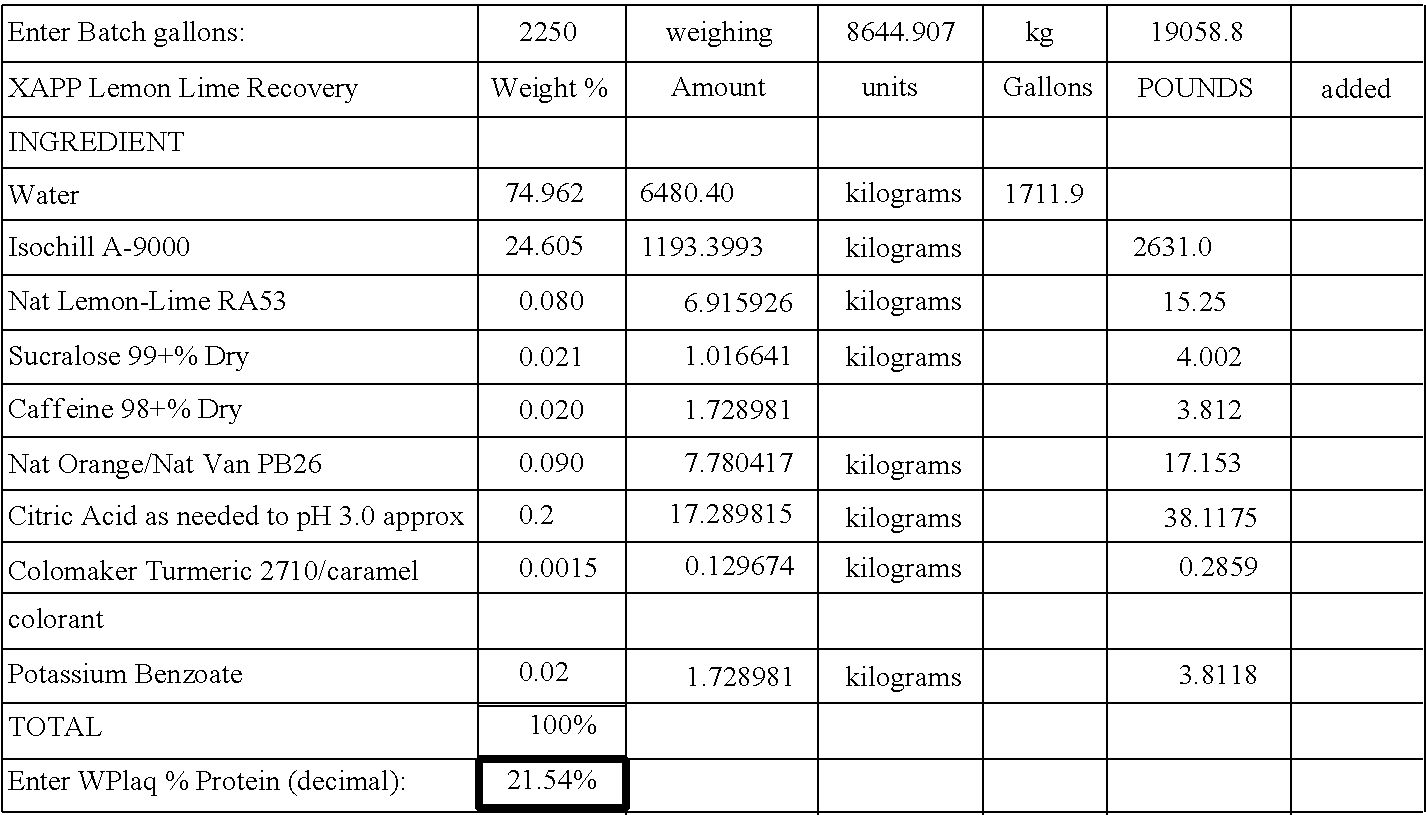Protein beverage and method of making same
a technology of protein beverage and concentrate, which is applied in the field of protein beverage and protein beverage concentrate, can solve the problems of protein precipitation or gelation, affecting taste, and the inability of hydrolyzed whey protein to be interchangeable with another,
- Summary
- Abstract
- Description
- Claims
- Application Information
AI Technical Summary
Benefits of technology
Problems solved by technology
Method used
Image
Examples
example one
[0132]The following example describes use of the aqueous protein ingredient for the production of approximately 10,000 liters of a fruit-flavored protein beverage with a whey protein concentration of 3.33%, approximately equal to the total protein concentration in bovine milk. The weight of the batch is approximately 10,350 kg.
[0133]Temperature should be maintained in the range of 40-50 degrees Fahrenheit during the acidification process.
[0134]1035 kg of Aqueous Whey Protein at 33.3% (w / w) total protein is diluted by addition and slow mixing of an equal weight of purified water to yield 2070 kg of aqueous 16.65% whey protein.
[0135]Approximately 50 kg of 85% phosphoric acid is added at a rate of about 5 kg / minute with constant mixing with the endpoint being a target pH of 3.2±0.2.
[0136]Acidified aqueous protein is transferred into two bulk totes designed for palletized food-grade liquid transport. The totes typically have a capacity of 250-300 gallons, and in this case the totes cont...
example two
[0141]An alternate method of producing such a beverage can be performed by the full dilution and ingredient addition being conducted at the site of protein production, followed by bulk transport of finished beverage to the beverage processor / bottler. This method is considered to be more costly due to transport of additional water and would generally be avoided unless the beverage processor was unable to complete the batch preparation.
example three
[0142]Another alternate method of producing such a beverage consists of transport of the highly concentrated aqueous protein in its undiluted and unacidified state, after which these steps are performed at the site of beverage processing and container filling.
PUM
| Property | Measurement | Unit |
|---|---|---|
| time | aaaaa | aaaaa |
| isoelectric point | aaaaa | aaaaa |
| isoelectric point | aaaaa | aaaaa |
Abstract
Description
Claims
Application Information
 Login to View More
Login to View More - R&D
- Intellectual Property
- Life Sciences
- Materials
- Tech Scout
- Unparalleled Data Quality
- Higher Quality Content
- 60% Fewer Hallucinations
Browse by: Latest US Patents, China's latest patents, Technical Efficacy Thesaurus, Application Domain, Technology Topic, Popular Technical Reports.
© 2025 PatSnap. All rights reserved.Legal|Privacy policy|Modern Slavery Act Transparency Statement|Sitemap|About US| Contact US: help@patsnap.com



